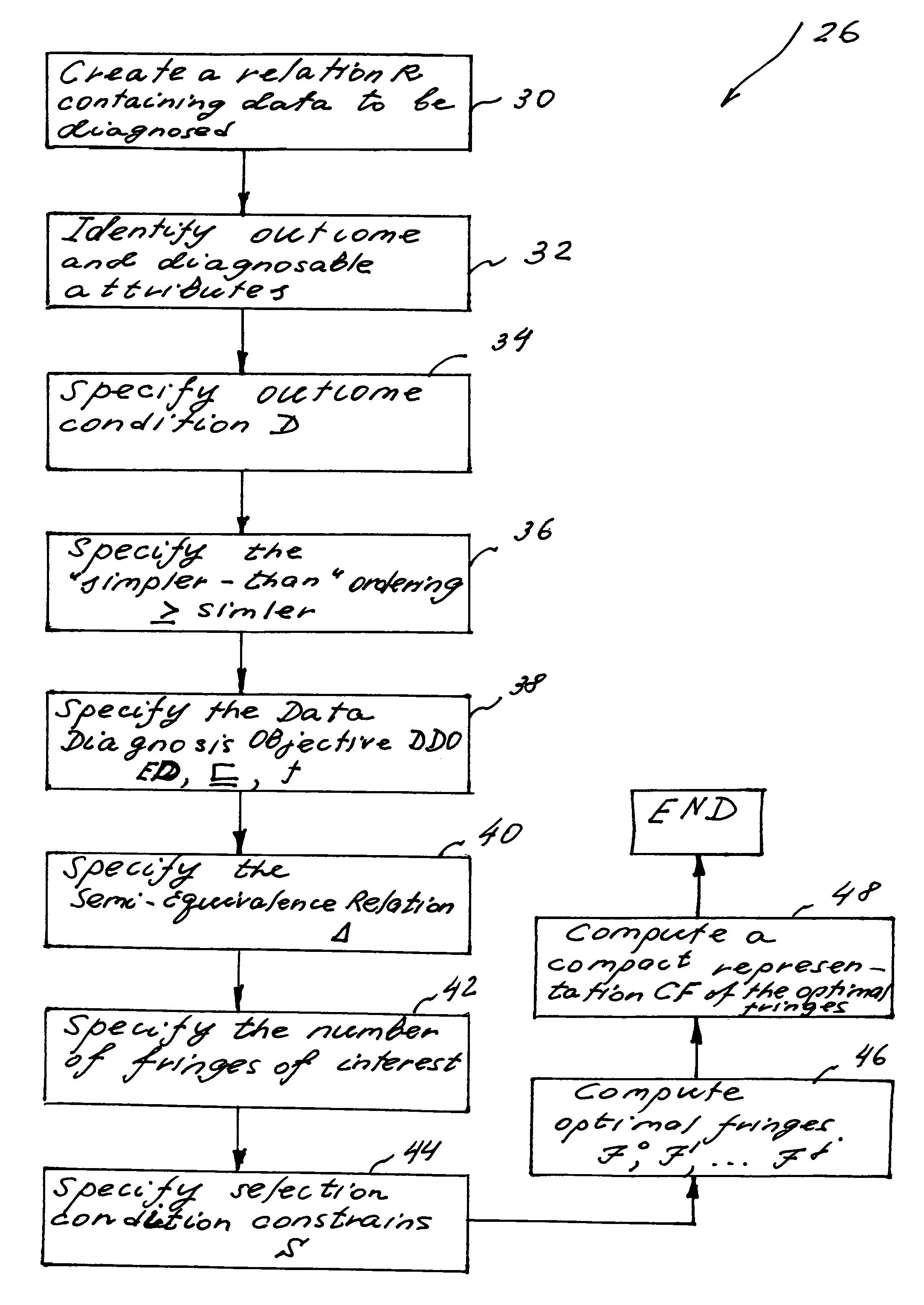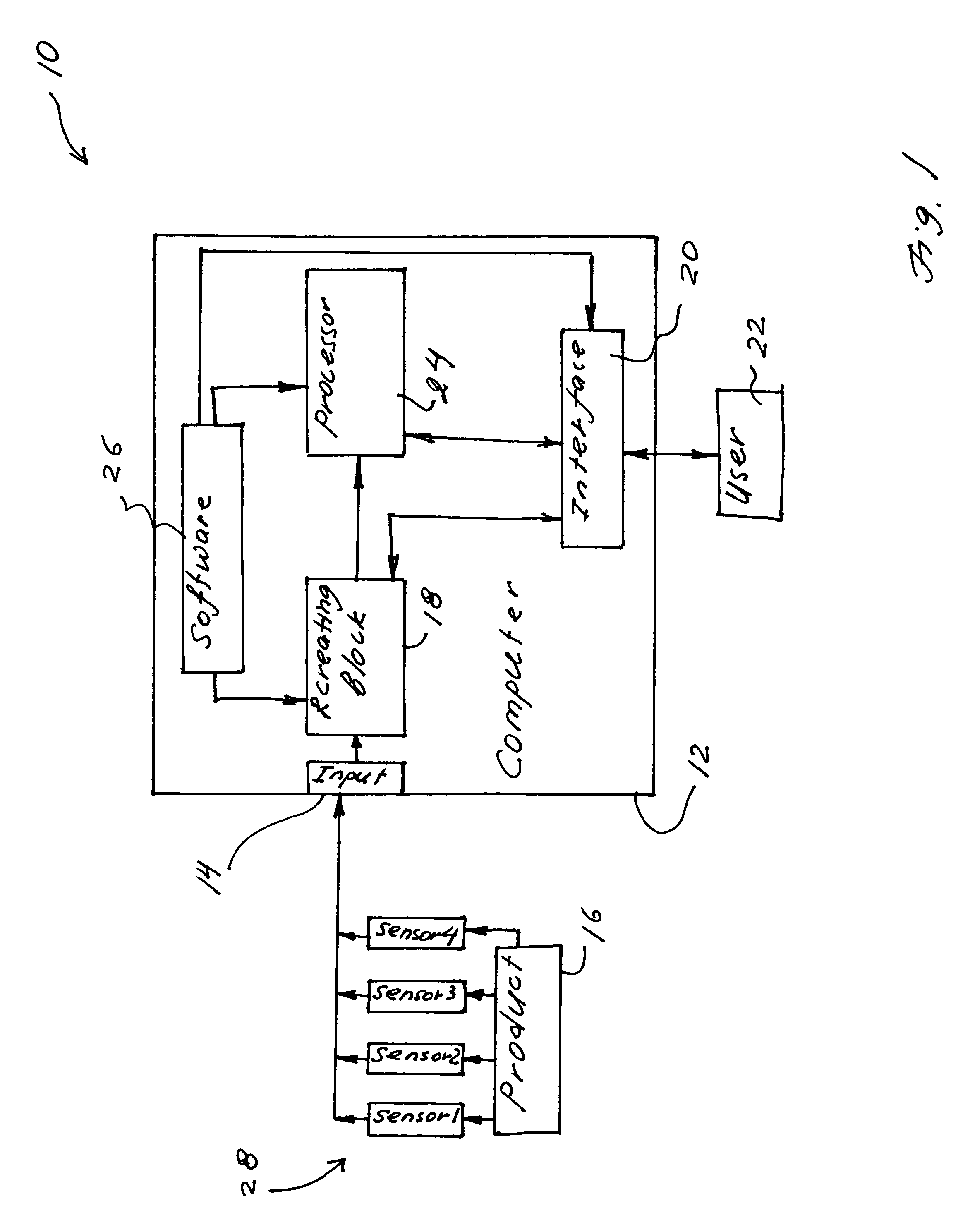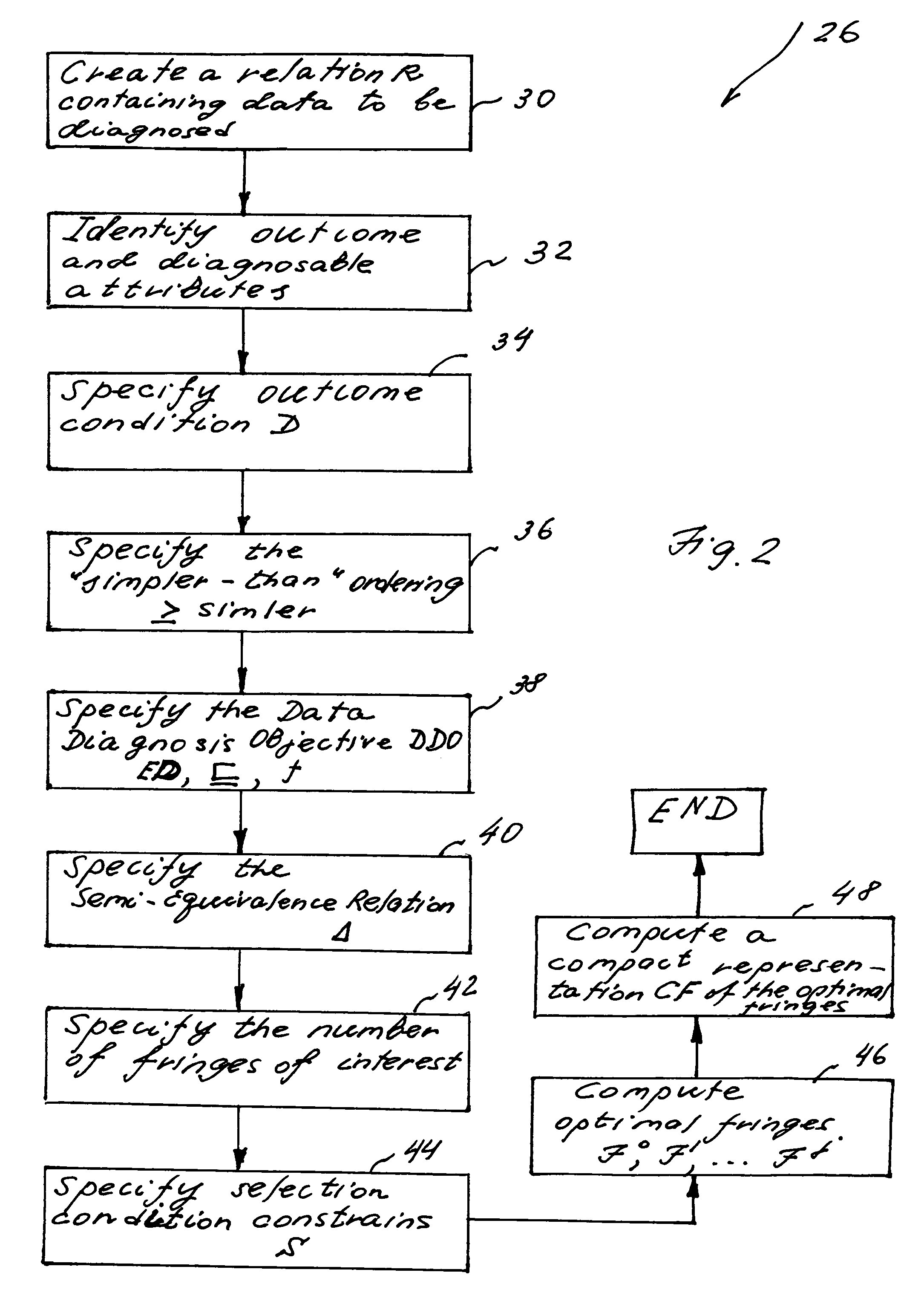Method and system for optimal data diagnosis
a data diagnosis and optimal technology, applied in the direction of instruments, ignition automatic control, electric controllers, etc., can solve problems such as inability to return a rule of interest, excessive number of rules being returned for analysis, and problems such as diagnostic inference problems
- Summary
- Abstract
- Description
- Claims
- Application Information
AI Technical Summary
Benefits of technology
Problems solved by technology
Method used
Image
Examples
example 2.1
Manufacturing Example 1.1 Revisited
[0094]Returning to the Manufacturing example 1.1, two possible outcome conditions that one may want to use are Inspection=14 and Inspection≠0.
example 2.2
Loan Default Prediction Example 1.2 Revisited
[0095]Returning to the loan default prediction example 1.2, a possible outcome condition that one may want to use is Default=1.
example 2.3
Census Example 1.3 Revisited
[0096]Returning to the census example 1.3, the outcome condition used is Income=true, where Income=true means an individual earns more than $50,000 a year.
[0097]Definition 2.2 (atomic diagnosable condition) If Ai is a diagnosable attribute and l, u, εdom(Ai) are values, then l≦Ai≦u is called an atomic diagnosable condition. If l=u, then we will also use Ai=l to denote l≦Ai≦u.
[0098]All attributes can be either numeric or non-numeric; if Ai in the above definition is a non-numeric attribute, then it must be the case that l=u.
PUM
 Login to View More
Login to View More Abstract
Description
Claims
Application Information
 Login to View More
Login to View More - R&D
- Intellectual Property
- Life Sciences
- Materials
- Tech Scout
- Unparalleled Data Quality
- Higher Quality Content
- 60% Fewer Hallucinations
Browse by: Latest US Patents, China's latest patents, Technical Efficacy Thesaurus, Application Domain, Technology Topic, Popular Technical Reports.
© 2025 PatSnap. All rights reserved.Legal|Privacy policy|Modern Slavery Act Transparency Statement|Sitemap|About US| Contact US: help@patsnap.com



